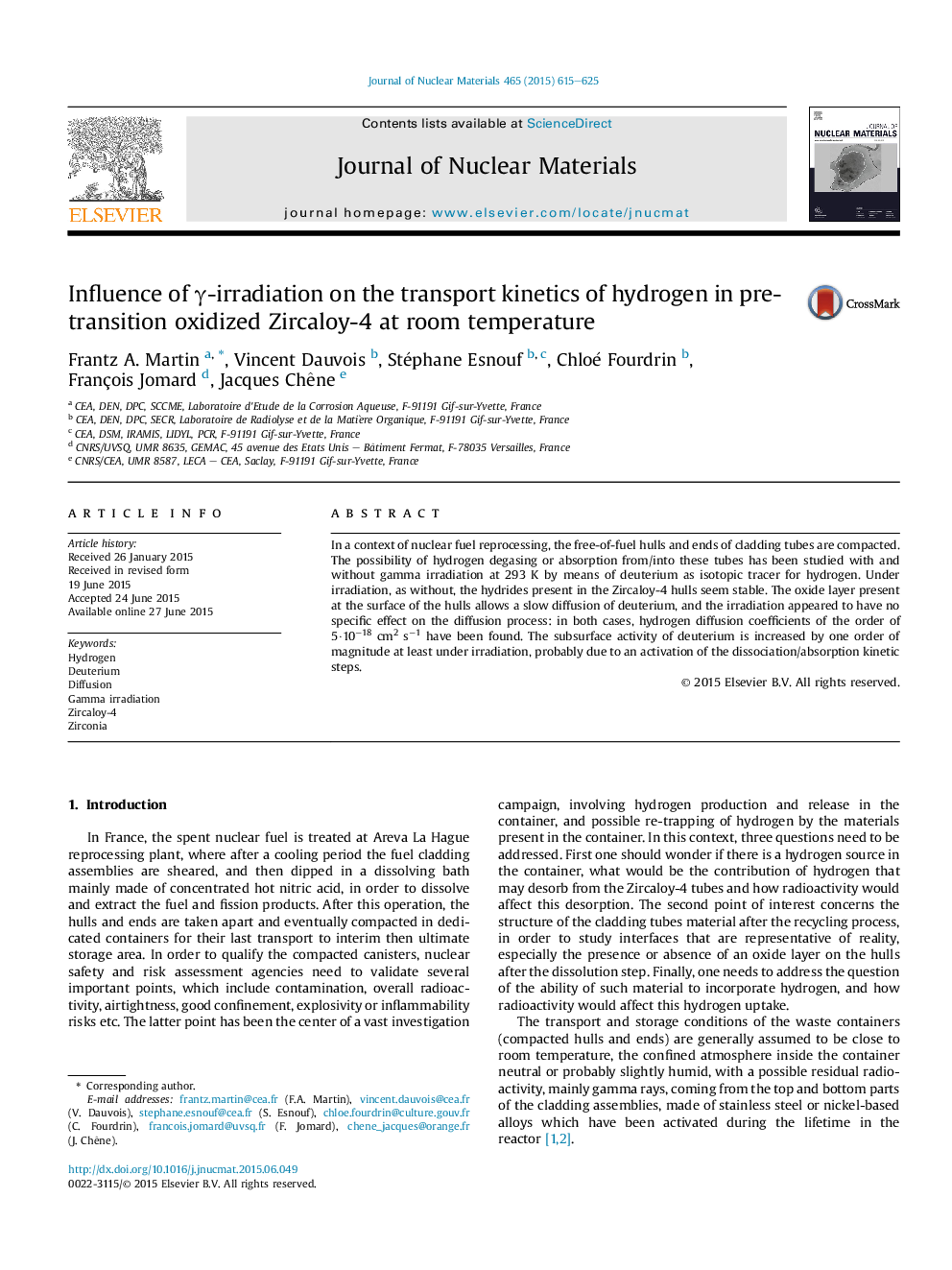| Article ID | Journal | Published Year | Pages | File Type |
|---|---|---|---|---|
| 7965486 | Journal of Nuclear Materials | 2015 | 11 Pages |
Abstract
In a context of nuclear fuel reprocessing, the free-of-fuel hulls and ends of cladding tubes are compacted. The possibility of hydrogen degasing or absorption from/into these tubes has been studied with and without gamma irradiation at 293 K by means of deuterium as isotopic tracer for hydrogen. Under irradiation, as without, the hydrides present in the Zircaloy-4 hulls seem stable. The oxide layer present at the surface of the hulls allows a slow diffusion of deuterium, and the irradiation appeared to have no specific effect on the diffusion process: in both cases, hydrogen diffusion coefficients of the order of 5·10â18 cm2 sâ1 have been found. The subsurface activity of deuterium is increased by one order of magnitude at least under irradiation, probably due to an activation of the dissociation/absorption kinetic steps.
Related Topics
Physical Sciences and Engineering
Energy
Nuclear Energy and Engineering
Authors
Frantz A. Martin, Vincent Dauvois, Stéphane Esnouf, Chloé Fourdrin, François Jomard, Jacques Chêne,
